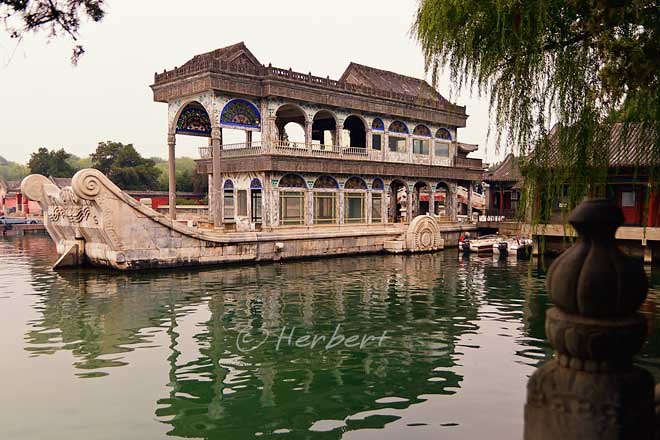
Location: Marble Boat, YiheYuan, Beijing, China(39� 59' 48.4? N, 116� 15' 48.9? E)
Date: 19 October 2010, 11.10am
Camera: Canon 500D with Sigma 17-70/f2.8-4.5
Yuheyan, the Summer Palace was the summer retreat of the Chinese Emperors/Empress. The Palace is actually a landscape garden with a variety of pavilions, gardens, palaces etc centred around Kunming Lake and Longevity Island. The man-made lake was an imitation of Xihu of Hangzhou and the soil excavated from the lake was used to make Longevity Hill. The Summer Palace was destroyed twice �during the Anglo-French allied invasion of the 1860 2nd Opium War and during the attack by the eight allied powers in the 1900 Boxer Rebellion. The Old Summer Palace (YuanMingYuan) was also destroyed in the 2nd Opium War and was burnt down with looting and plundering of Chinese arts and treasures by British and French soldiers. Whilst the YiheYuan was rebuilt after the 1st destruction, YuanMinYuan was left as it is. Ironically the rebuilding of YiHeYuan by diverting funds originally designated for the Chinese Navy contributed to her second destruction. The destructions of these compounds etched a deep wound in the Chinese psyche as they represent the apex of Chinese humiliation and bullying in the hands of Western powers. These events continue to shape the mind and thinking behind some of China�s foreign and defence policies today.
One of the iconic structure in YiHeYuan is the so-called Marble Boat, a lakeside pavilion on the grounds of the Palace. It is a 2 storey structure which is not actually marble. It has a large stone base with wooden superstructure painted to imitate marble.